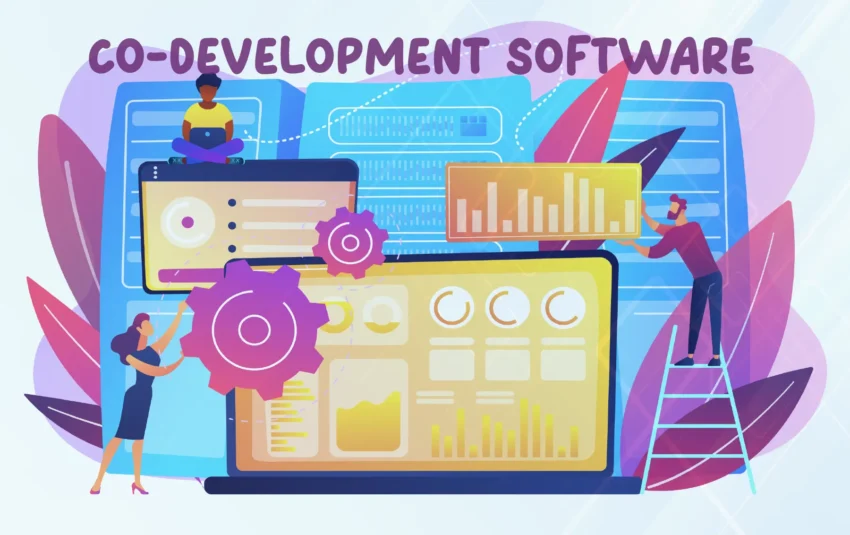Introduction
Most software in the historical social context allows collaboration between working teams in development between any imagined worlds online and ranges refreshed and in sync into each other. Co-development software by its very next also is key to getting this coordination excellent and more productive as it brings development teams, often dispersed in different remote locations, together to work on similar projects. This article will elaborate on co-development software, its importance, must-have features, pros and cons of such systems, and some of the best tools for seamless integration.
Understanding Co-Development Software
Co-development software is where several developers, engineers, and designers work together for one enterprise in real-time. It allows coordination among different teams by cutting back redundancy and ensuring proper integration of the various components in the software development lifecycle.
This software is the best coordination tool in such organizations that are working on massive projects with different areas of work involving software developers, QA teams, and IT pros. The co-development software allows the company to enhance workflow efficiencies, boost productivity, and achieve faster project delivery.
Key Features of Co-Development Software
Version Control and Collaboration
A strong co-development platform integrates version control systems like Git, SVN, or Mercurial so that the teams can smoothly work on different parts of the codebase without suffering any conflicts. Features such as branching, merging, and rollback enable good collaboration between developers.
Real-time Editing and Synchronization
Real-time editing and synchronization will empower team members to edit the code, share changes in real time, and review changes with minimum intervention. This would be highly valuable for remote teams that are spread across the entirety of varied time zones.
Continuous Integration and Deployment (CI/CD)
Automated testing and deployment help reduce manual work and bolster the overall efficiency.
Developers can utilize CI/CD tools to propagate changes in the code without disrupting the whole software functionality.
API and Third-Party Integrations
Co-development platforms need to allow seamless integration with other essential tools such as project management. (Jira, Trello), cloud services (AWS, Azure, Google Cloud), and DevOps tools (Docker, Kubernetes).
Benefits of Co-Development Software
Enhanced Collaboration
Co-development software allows for teamwork by offering a single platform that operates well, hence allowing developers to work in a team, thereby reducing silo and encouraging communication.
Improved Code Quality
These enhancements bring about automated testing, continuous integration, and powerful built-in debugging tools that will encourage improved code quality and minimize technical debt and production issues.
Scalability and Flexibility.
The modern co-development tools are indeed cloud based, providing scalable solutions to cater to developing project requirements and size of teams.
Reduced costs of operation.
The operational costs of a business can be reduced while increasing productivity, efficiency, and output quality through the streamlining of work processes and some degree of automating task execution.
Challenges in Co-Development Software Integration
Despite the existing multisided advantages of co-development software, several challenges accompany its implementation:
Problems with Compatibility
When integrating different tools and systems, compatibility issues may arise, necessitating custom solutions or workarounds.
Security Risks
With many users working on a shared platform, issues regarding security implications, like data breaches and unauthorized changes, become serious concerns.
Learning of Technology
In general, technicians have to spend time getting trained on how to use new tools or onboard into the system. This can slightly dampen productivity at the beginning.
Latency and Performance Issues
Latency issues can occur with cloud-based co-development tools, especially in the cases of large codebases or a very high number of users.
Top Co-Development Software for Seamless Integration
GitHub
GitHub is a joint development platform, very popular, that provides powerful version control and CI/CD capabilities with integrations to many other tools.
Azure DevOps
Azure DevOps is a full-fledged development and CI/CD software toolset, perfectly suited for enterprise users seeking a Microsoft-backed solution.
Google Cloud Source Repositories
Joint with other integrated services from Google Cloud, this solution offers personalized Git repositories to the teams working on Google’s networking infrastructure.
AWS CodeCommit
AWS CodeCommit is a fully managed source control service that integrates beautifully with other services offered by AWS and provides a seamless development experience on the cloud.
Conclusion
In co-development software, the much achieved will be very seamless collaboration, workflow flow to the highest possible degree, and great productivity. Ensuring one picks the right to-development platform, along with the needed version controls, CI/CD, and automated code reviews, businesses will be able to speed up their development cycles and improve software quality.
Despite the security risks, compatibility issues, and learning curve difficulties, the pros far outweigh the cons. The right co-development software is the best way to guarantee smooth collaboration and save on cost as well as delivery time for quality software.


